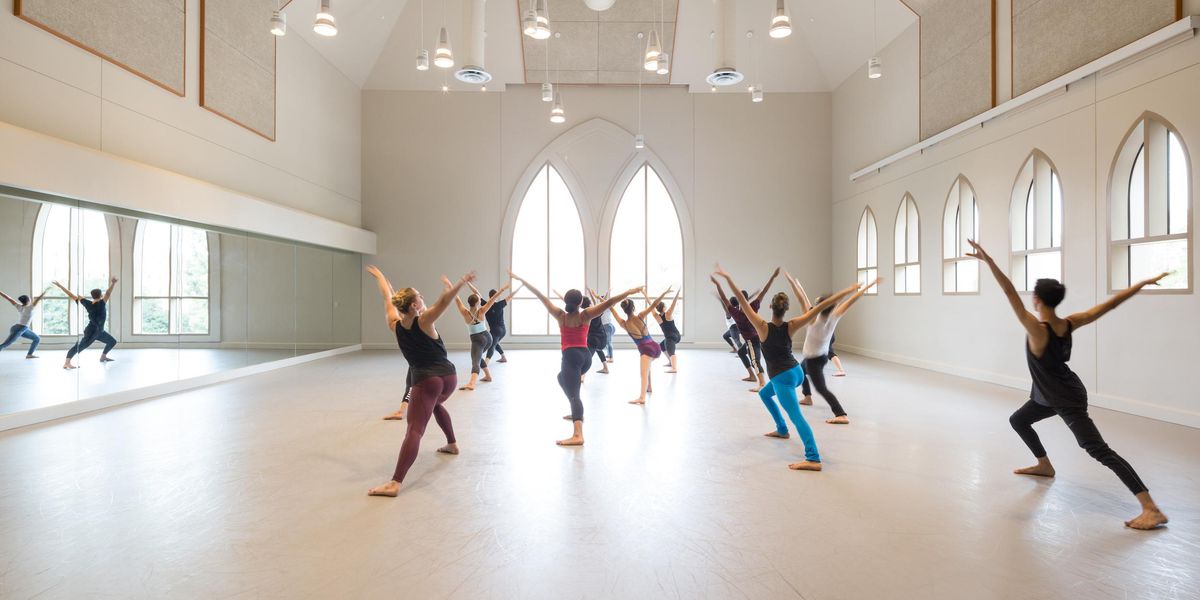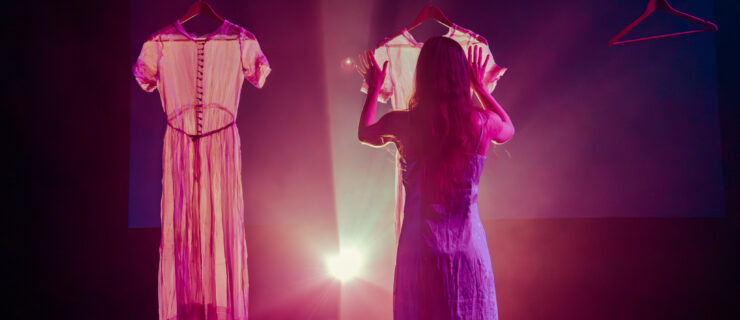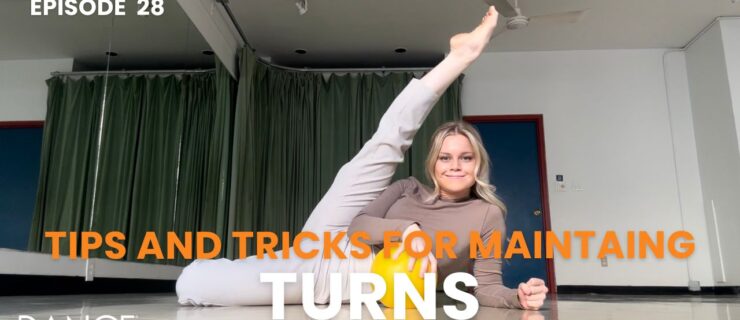Time and Again
JoAnn Hunter
gives On a Clear Day’s movement that retro feel.
The first time JoAnn M. Hunter saw Harry Connick Jr., she was a teenager at home in Rhode Island watching The Tonight Show Starring Johnny Carson. “I thought, ‘Who is this young, good-looking guy doing this old-fashioned music?’ ” she says.
Flash forward a decade or so, and he’s wearing his composer’s hat and she’s been hired by Susan Stroman to dance to his music in the vastly underappreciated 2001 musical Thou Shalt Not.
Flash forward to today, and they’re working together again—but this time he’s onstage, playing a psychiatrist who falls in love with his patient’s former self, and it’s Hunter who’s behind the scenes, choreographing the revival/revision of the 1965 musical On a Clear Day You Can See Forever.
Hunter, 47, had never planned to be on the other side of the table in the rehearsal room. “All I ever wanted was to be a performer,” she says. Her mother had always dreamt of being a dancer, and Hunter started ballet at 11, at a dance studio in Providence. By 17, she was living in New York, studying on scholarship with the renowned jazz teacher Chuck Kelley, and auditioning “for everything and anything.” She struggled for a while, finally getting work on several touring shows and then, in 1989, dancing in her first Broadway show, Jerome Robbins’ Broadway.
After 11 more Broadway musicals and a draining divorce, Hunter needed a break. She’d saved enough money to make a furlough possible, but Rob Ashford, with whom she’d done Thoroughly Modern Millie, asked her to be an associate choreographer on a couple of his projects. To her surprise, “I loved it. I loved being in the room, the banter. It was creative. And whatever happened, I didn’t get blamed. I was very happy.”
She was so content being an associate choreographer that when she got the inevitable call about choreographing a show on her own—a touring production of Chitty Chitty Bang Bang—she didn’t immediately jump at the chance. She ultimately decided to give it a shot, she says, “to find out if I liked it and see if I was any good.” The clinching argument? “It’s a tour, and if it’s really bad, no one will see it.”
She found herself “coming home every night exhausted but invigorated,” and she embarked on the next phase of her career, the one that brought her to On a Clear Day, her first Broadway credit as a choreographer.
The show, with a score by Burton Lane and Alan Jay Lerner, is remembered mostly for the incandescent performance of Barbara Harris (as a chain-smoking kook with an uncanny ability to “remember” 18th-century London) and for Vincente Minnelli’s 1970 movie version starring Barbra Streisand and Yves Montand. With a romantic story revolving around ESP and reincarnation, it was a very ’60s affair, and the current production brings it into the 21st century with some gender-bending changes in the book, revised by playwright and screenwriter Peter Parnell. Connick plays the shrink whose patient, now a gay man, seems to have lived in the ’40s as a female jazz singer.
Although the original show had a couple of production numbers, it was notoriously book-heavy. The new version has been streamlined, but Hunter says that as soon as she read it she knew On a Clear Day would be a challenge. “It’s old-fashioned in some ways,” she says, “but it’s not a typical show. The book is important”—so important that her ensemble had to be actors and singers first, dancers and movers second. There were also the two time periods to contend with—the present, moved up from the 1960s to the 1970s, and the past, in the ’40s. “And,” she adds, “I had three leads whose dancing was not at the top of their resumés.”
It was, she says, “tricky.” She knew she didn’t want literal reproductions of period dance, but she needed “a vocabulary that would make these actor-singer-dancers look good and look like they were having fun doing it. I tried to make the movement look organic—like they were real people moving, as opposed to dancers doing a big number. That serves the story better and it serves the actors better.”
In the end, she says, her performers “were all terrific. They worked incredibly hard—they probably never heard 5-6-7-8 so much in their entire lives.” Connick, who won a Tony nomination for his sexy star turn in Kathleen Marshall’s revival of The Pajama Game, surprised her. “I thought he was going to be cerebral,” she says, “but he’s very visual. He would watch your body, he would see things that not even all the dancers could see, and then mimic them. I was really impressed.” Sort of like she’d been back in Rhode Island watching Johnny Carson.
Sylviane Gold writes on theater for
The New York Times.
JoAnn Hunter leading a
Clear Day rehearsal. Photo by Litwin, Courtesy Clear Day.




